The pilgrimage route from France to Santiago, Spain. Links to all pages:
Below is a section on How to Cheat
The pilgrim traffic to Santiago started maybe 500 years ago and followed the main roads. The pilgrims walked between the towns. The towns are placed in the valleys where the best agricultural land is. There has been roads between these towns for at least 1,000 years.
Now there is heavy traffic between the large cities. Large highways, motorways and railways all follow the valleys. That means that if the pilgrim route follows the historical track, it also follows a highway or motorway.
On the flat, middle stretch in Castilia there are too many parts of the road where the Camino follows highways, motorways and railways with too much traffic. You can hear cars on the motorway all day long. It may be the original route, but it is not pleasant anymore.
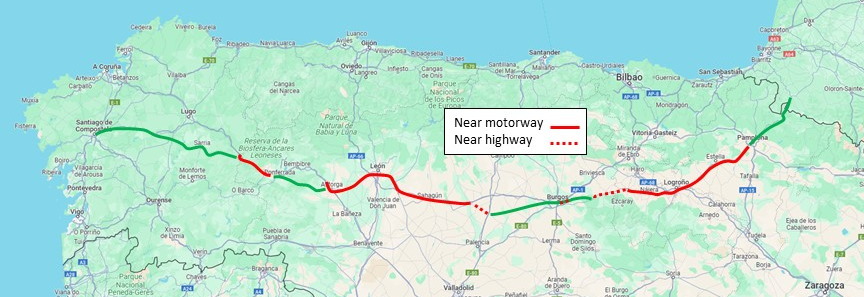
The entire route from Saint-Jean-Pied-de-Port to Santiago (right to left). The red colour shows where the camino is near a motorway. Based on Google Maps.
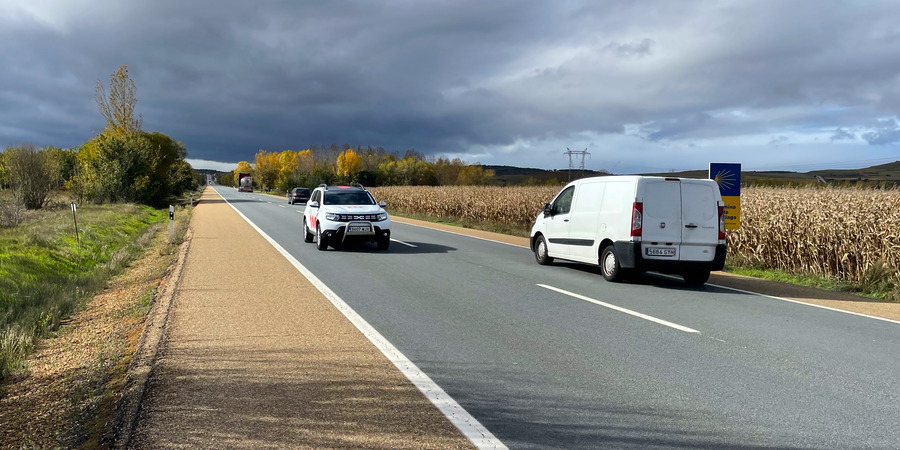
Between Hospital de Orbigo and Astorga you are supposed to walk straight ahead on highway 210. 94 large trucks passed during the 90 minutes I spent there. 300 metres to the south is motorway AP-71, and you can hear that as well. Not enjoyable.

Camino Francés follows the straight highway P-980 18 kilometres from Fromista to Carrión de los Condes. Not much traffic, but boring.
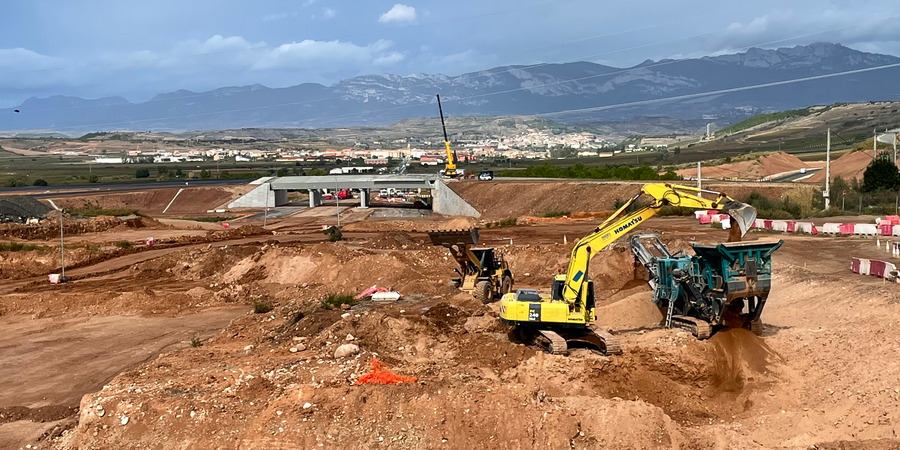
Crossing a new motorway near Navarrete

Here is a newly made path along a minor road by Monasterio de San Antón. That is quite OK.
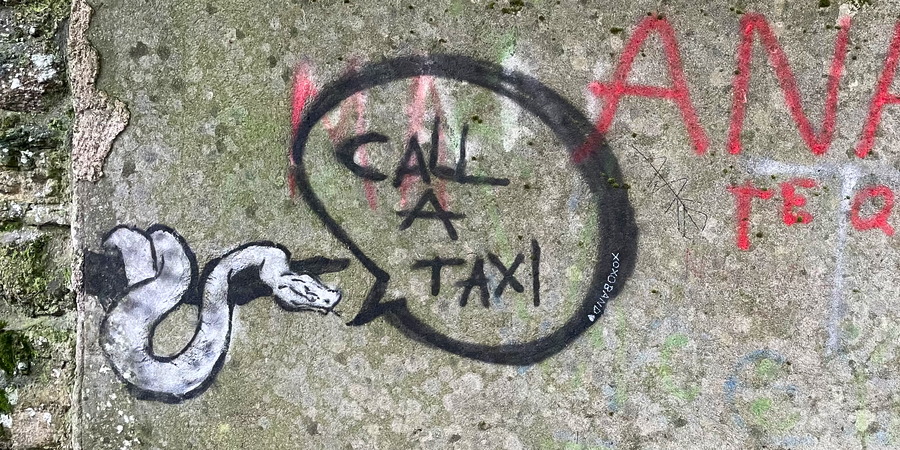
"Call a taxi". Seen in Melide.
Call a taxi? Yes and no. You may skip the central, flat part of Camino Francés. The pilgrim rules of the church say that you must walk at least the last 100 kilometres to Santiago to receive the certificate. Here are three proposals:
All these distances are approximate.
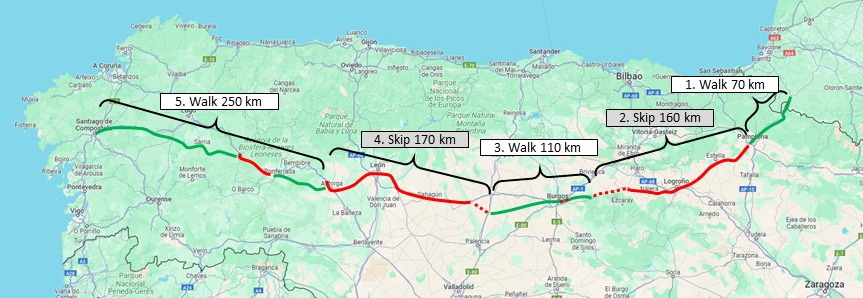
Proposal 2 from right to left: 1. Start in Saint-Jean-Pied-de-Port. Skip 2. Pamplona-Logrono-Villafranca Montes de Oca and skip 4. Fromista-Leon-Astorga. You walk 460 kilometres, skip 330 kilometres and get certificate for the final 250 kilometres.
If you skip parts of the route, you should also avoid the 11 kilometres from the village Orbaneja Riopico to the centre of Burgos. That is a boring, ugly and noisy stage. See the photo from the entrance to Burgos here. Call a taxi! The way out of Burgos is OK, and the stage Tardajos-Fromista is lovely.
If you skip a part of the route, then donít forget a stamp in the town where you continue.

The last 250 kilometres from Astorga to Santiago are enjoyable. You climb to 1,500 metres height at Cruz de Ferro and to 1,300 metres at O Cebreiro, and the cars are elsewhere.

The last 100 kilometres to Santiago are the most crowded, as the pilgrim rules of the church say that you must walk at least this stage to receive the certificate.
Links to all pages: